Understanding the Altimeter Diagram: A Guide to Altitude Measurement
Sep 21, 2024
Think you can fly with the confidence of knowing your exact altitude at any time. Whether you’re a pilot navigating complex airspace, a skydiver looking for the perfect jump point, or a hiker summiting towering peaks, knowing how altimeters work can make all the difference in your experience and safety.
Get into this guide to demystify altimeter diagrams, understand altimeter setting explained and unlock altitude measurement for safer navigation.
What is an Altimeter?

An altimeter is an essential instrument used to measure the altitude of an object above a fixed level, typically sea level. This device is crucial in various fields, including aviation, navigation, and outdoor activities like hiking and skydiving.
Altimeters provide vital information that ensures safe and efficient operations by indicating how high an object is relative to sea level.
There are different types of altimeters, each with unique characteristics and applications. Pressure altimeters measure altitude by detecting changes in air pressure. As you ascend, the air pressure decreases, and the altimeter translates this change into an altitude reading.
Radio altimeters, on the other hand, use radio waves to determine altitude by measuring the time it takes for a signal to travel to the ground and back.
GPS altimeters utilize signals from navigation satellites to provide accurate altitude measurements, regardless of atmospheric conditions.
Understanding the type of altimeter and its specific use case is crucial for accurate altitude measurement and safe navigation.
How Altimeters Work
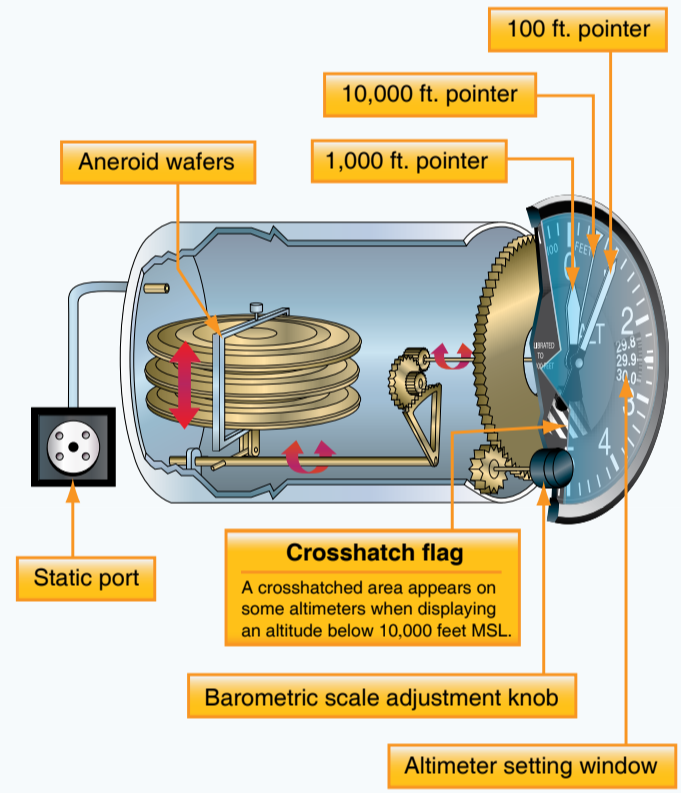
Altimeters are a vital instrument in aviation, giving you real time data on your aircraft height above mean sea level. By measuring altitude accurately, altimeters improve navigation, safety and situational awareness. How does an Altimeter Work is a crucial question for understanding their internal components and functions, which is key to mastering their use.
Knowing how altimeters work, including the internal components and functions is key to mastering them.
Aneroid Wafers
At the heart of a pressure altimeter are aneroid wafers. These are thin, flexible metal disks that expand and contract in response to changes in air pressure. As an aircraft ascends, the external air pressure decreases, causing the aneroid wafers to expand. Conversely, descending leads to increased air pressure, which makes the wafers contract. This expansion and contraction are crucial as they drive the mechanical movements inside the altimeter, ultimately translating into altitude readings on the instrument’s display.
Static Port
The static port plays a vital role by allowing the altimeter to sense external atmospheric pressure. Positioned on the aircraft's fuselage, the static port is designed to capture the pressure of the airflow, avoiding dynamic pressure errors that can occur due to the aircraft's movement. This accurate sampling of outside air pressure enables the altimeter to compare it with the pressure inside the aneroid wafers, thereby determining the aircraft's altitude with high precision.
Crosshatch Flag
A visual tool present on some altimeters is the crosshatch flag, which appears when the aircraft's altitude drops below 10,000 feet mean sea level (MSL). This flag provides an immediate, straightforward indication to pilots, helping them maintain better situational awareness. By quickly glancing at the altimeter, pilots can make prompt decisions to adjust their flight paths as needed, ensuring safer operations.
Barometric Scale Adjustment Knob
Barometric scale adjustment knob is used to calibrate altimeter based on current pressure. Pilots use this knob to set correct pressure, so altimeter shows true altitude. This is especially important when flying through areas with changing pressure, so you can make real time adjustments and get accurate altitude, safer and more efficient flight.
Altimeter Setting Window
The altimeter setting window, also known as the Kollsman window, displays the current pressure setting that the altimeter is calibrated to. By providing a clear readout of the barometric pressure, this window enables pilots to fine-tune the instrument according to local conditions. Precise adjustments help ensure that the altitude readings are both accurate and reliable, which is essential for maintaining proper altitude during flight.
Understanding the intricacies of how each component functions will undoubtedly empower pilots to make informed decisions, ensuring a safe and efficient flight experience.

Altimeters: Altitude Measurement Made Easy
An altimeter is a must-have that measures how high something is above a fixed point, altimetry. This is important for many activities and professions.
The principle behind altimeters is their use of atmospheric pressure to measure altitude. When you go up, the atmospheric pressure goes down, so the altimeter can measure your height accurately. A barometric altimeter, a type of pressure altimeter, uses this pressure-altitude relationship. It has a special calibration to show the altitude.
You can find barometric altimeters in aircraft. Pilots use them to know their exact altitude and to fly safely.
Besides aviation, skydivers and hikers also use barometric altimeters. These users need accurate altitude to navigate and to enjoy.
How Altimeters Work: Simplified
Altimeters measure height by comparing outside air pressure to sea level pressure. This tells you how high you are above a certain pressure level. It is important to adjust the altimeter for accurate readings of indicated altitude based on varying air pressure systems.
Air is denser at sea level, more pressure. As you go up in altitude the air pressure decreases because the air is less dense.
A standard altimeter has sealed aneroid wafers. These wafers hold 29.92” Hg of pressure which is the standard pressure at sea level used for calibration.
When the plane changes altitude the static pressure around the altimeter changes. This outside pressure enters the altimeter through a tube connected to the static ports on the plane.
The wafers inside the altimeter expand or contract with these pressure changes. This movement is what allows the mechanism to calculate the current altitude.
By showing these altitude readings altimeters give pilots and others valuable information for safe navigation and makes flying higher altitudes
Types of Altimeters: Barometric Altimeter
Getting into the world of altimetry reveals a bunch of cool technologies, each designed to measure altitude with precision. Whether you’re flying, mapping the earth or landing a spacecraft, knowing the types of altimeters is key. Let’s get into the science behind these instruments and see how they help us out.
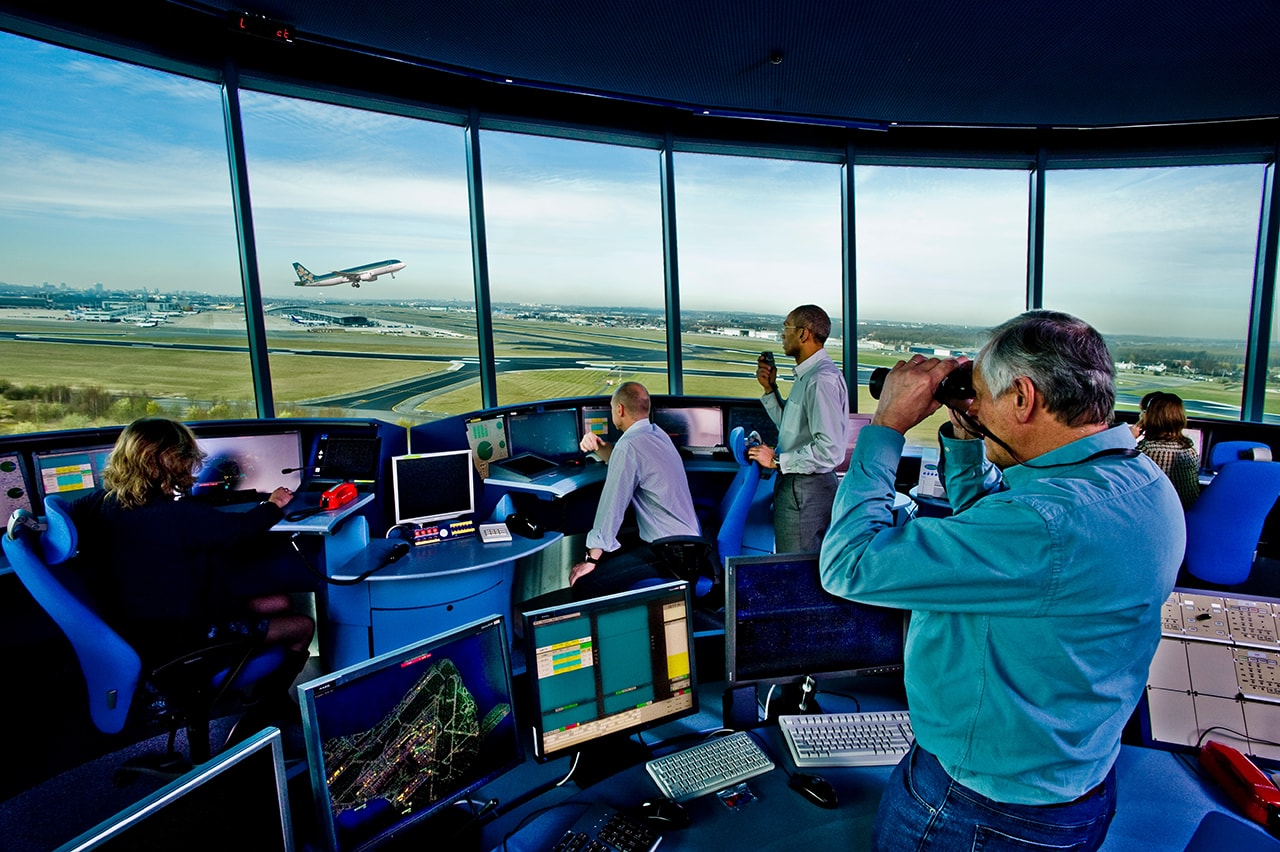
Pressure Altimeters
Pressure altimeters measure altitude by measuring changes in air pressure. They are used in aviation because they give you a reliable altitude reading based on the air pressure around the aircraft.
Radio Altimeters
Radio altimeters send a radio signal to the ground and measure how long it takes to bounce back. This is good for lower altitudes. They determine absolute altitude by measuring the distance above the ground.
Radar Altimeters
Radar altimeters are a type of radio altimeter that use radar signals instead of radio waves. This is good for certain aviation and land survey applications where precise altitude measurement is required, such as terrain-following in military aircraft or detailed land mapping
Laser Altimeters
Laser altimeters shoot a laser at the ground and measure the time it takes to get back. High precision and used in topographical mapping and spacecraft landings.
GPS Altimeters
GPS altimeters measure altitude by using signals from navigation satellites. Accurate regardless of atmosphere and very versatile and reliable for all altitude measurements. The global positioning system determines altitude through trilateration with satellites.
Summary
Learn about the different types of altimeters—pressure, radio, radar, laser, GPS—and how they measure altitude with precision. For aviation, topographic mapping or spacecraft landings each type of altimeter is key. Join us and level up your altimetry knowledge.
Typical Pressure Altimeter Characteristics
A typical pressure altimeter is designed to measure altitude by detecting changes in air pressure. It contains a sealed aneroid capsule that expands or contracts in response to variations in static pressure.
This movement is then converted into a mechanical linkage that drives the altimeter’s pointers, providing a visual representation of the current altitude.
Pressure altimeters are widely used in aviation due to their reliability and accuracy. However, their performance can be influenced by changes in air pressure, temperature, and humidity.
For instance, as air pressure decreases with altitude, the aneroid capsule expands, causing the pointers to move and indicate a higher altitude. Conversely, changes in temperature and humidity can affect the density of the air, potentially impacting the altimeter’s accuracy.
Despite these potential influences, pressure altimeters remain a trusted tool for pilots, offering a dependable means of measuring altitude during flight.
Factors Affecting Altimeter Readings
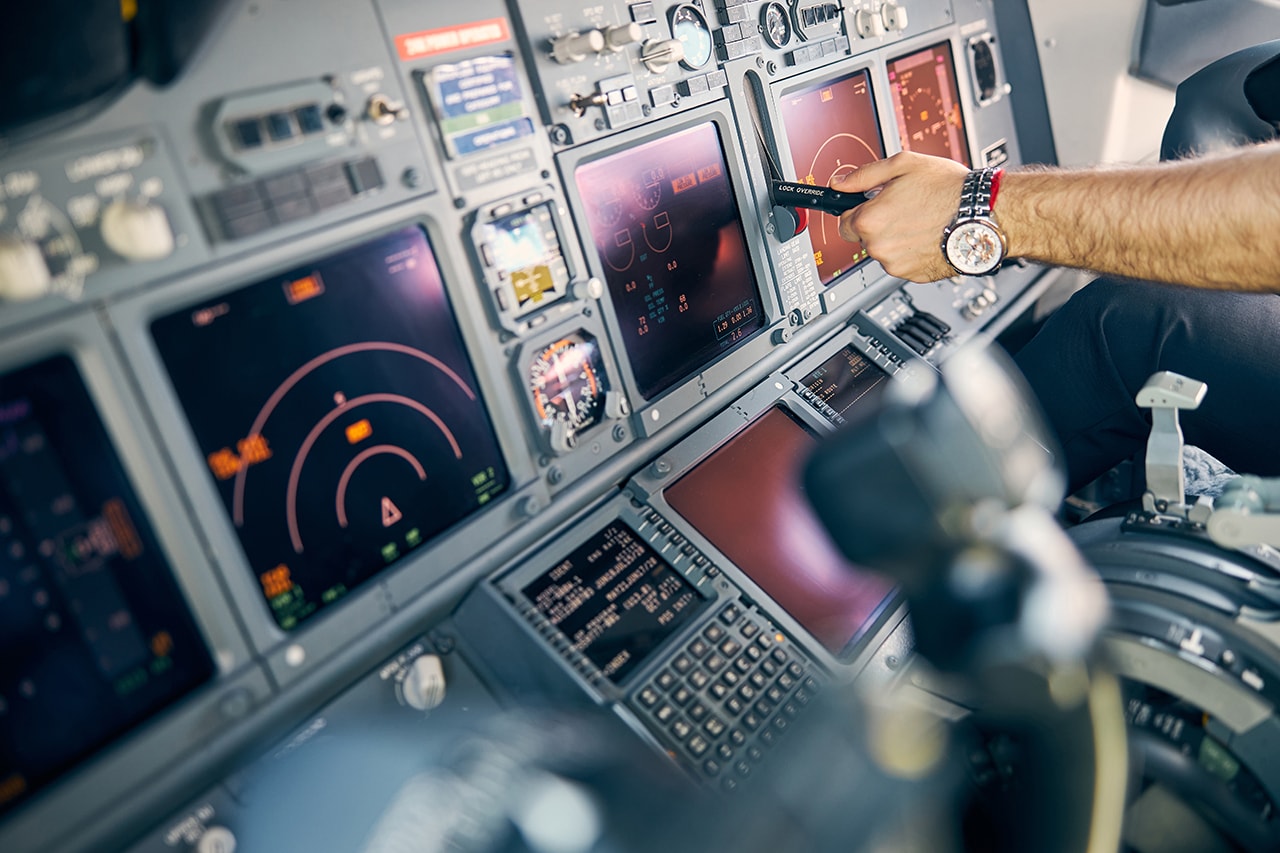
Temperature and Humidity
Temp and humidity are big factors in an altimeter. When these change they can expand or contract the altimeter. So if temp or humidity changes a lot the altimeter readings won’t be accurate. Pilots need to know how these conditions affect their instruments and adjust accordingly.
Air Pressure Changes
Another thing that affects altimeter readings is air pressure. The altimeter works on the pressure of the air around it, but as air pressure changes it can give you incorrect readings. This is more common with weather and geography changes. So understanding how air pressure affects altimeter accuracy is key to getting accurate altitudes.
Wind and Turbulence
Wind and turbulence can have a substantial effect on altimeter accuracy. These conditions can cause the aircraft to pitch and roll, leading to fluctuating altimeter readings. Pilots must factor in the presence of strong winds or turbulent conditions when interpreting altimeter data to ensure they are maintaining the correct altitude.
Altimeter Setting
The process of setting the altimeter is fundamental for accuracy. An incorrect altimeter setting can lead to significant errors in altitude readings. Pilots must regularly check and adjust their altimeter settings based on local conditions and standard atmospheric pressure to prevent inaccuracies from occurring.
Combined Environmental Effects
It is also crucial to consider how these factors combine. For example, a change in air pressure coupled with high wind conditions can compound the inaccuracies in altimeter readings. Pilots should adopt a holistic view and be vigilant of multiple environmental factors changing simultaneously to maintain accurate navigation.
Mastery and Vigilance
In summary, while altimeters are essential tools for flight, their accuracy can be impacted by temperature, humidity, air pressure changes, wind, and turbulence.
By understanding and adjusting for these factors, pilots can ensure safer and more reliable flights. Continuous monitoring, combined with timely adjustments, enables pilots to maintain a high level of situational awareness and ensures smoother navigation through varying environmental conditions.
Altimeter Calibration and Limitations

Altimeter calibration is the essential process of adjusting the instrument to ensure its accuracy and reliability. This fine-tuning makes sure that the altimeter readings are precise, which is critical for safe aircraft operation.
Calibration typically happens during routine maintenance checks and are carried out by licensed avionics technicians. These checks are vital because they safeguard the aircraft's occupants by ensuring that all instruments are functioning correctly.
If an altimeter is not calibrated properly, it can lead to inaccurate readings. These inaccuracies can cause pilot errors, which may have severe or even catastrophic consequences.
Altimeters are also subject to certain limitations. Factors such as temperature and humidity can affect their accuracy, making regular calibration even more important to maintain reliable readings.
In summary, regular altimeter calibration is critical for safe flight operations. Pilots and maintenance crews must work together to ensure that these instruments are always precise and trustworthy.
Altimeter Applications
Altimeters play a crucial role in aviation by measuring the altitude of an aircraft above sea level, ensuring a safe and accurate flight path.
For hikers and climbers, altimeters are invaluable tools that help measure their altitude and determine their position, enhancing safety and navigation during their adventures.
In the realm of space exploration, altimeters are used to measure the altitude of spacecraft, ensuring accurate positioning and successful missions.
Meteorologists rely on altimeters to measure atmospheric pressure, which is essential for determining and predicting weather patterns, thus contributing to more accurate weather forecasts.
Surveyors also use altimeters to measure altitude and determine precise positions, which is critical for creating accurate maps and conducting land assessments.
Common Altimeter Errors and How to Avoid Them
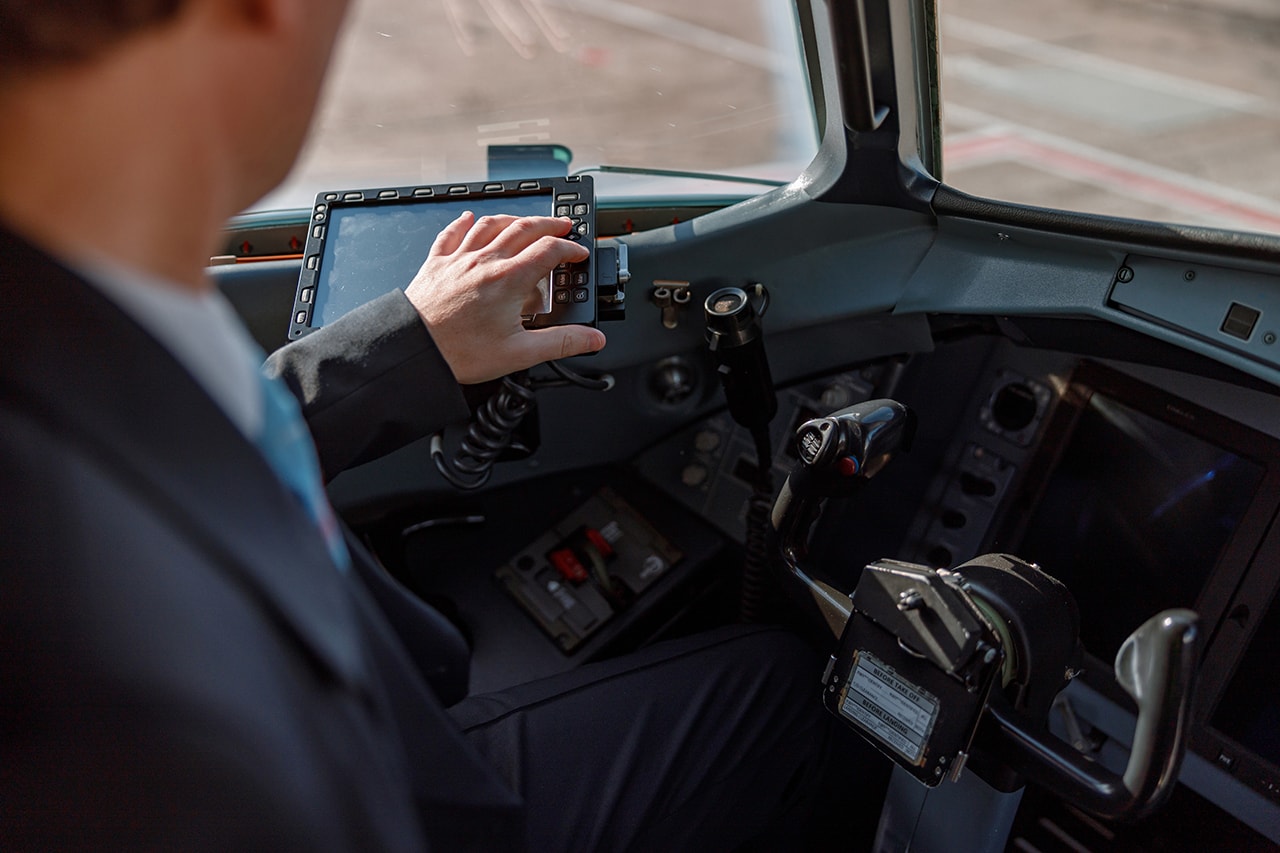
Knowing and fixing common altimeter mistakes will make you safer and more accurate in the air. These mistakes are caused by rapid temp and pressure changes or incorrect settings. Be aware of these to get good readings.
Check altimeter readings against GPS altitude. This will show up discrepancies and prevent misreads or calibration errors.
Moreover, pilots should always be ready to make quick adjustments to their altimeter settings in response to sudden environmental changes.
Staying vigilant and proactive can lead to smoother, safer flights for everyone on board.
Understanding and addressing common altimeter errors is crucial because they impact the safety and accuracy of flights.
These can happen due to temperature and pressure changes or instrument not calibrated. To get accurate readings compare altimeter with GPS altitude.
This will help you to identify and avoid complications.
Also pilots need to be alert and ready to adjust altimeter settings quickly when there is sudden environmental changes so everyone can have a safer and smoother flight.
These can happen due to temperature and pressure changes or instrument not calibrated. To get accurate readings compare altimeter
This will help you to identify and avoid complications. Also pilots need to be alert and ready to adjust altimeter settings
The Importance of Regular Altimeter Maintenance
Regular maintenance of an altimeter is essential for its reliable operation. Ensuring that it functions correctly can make a significant difference in flight safety.
Conducting routine checks and calibrations helps keep the altimeter accurate. This accuracy is important for pilots who rely on precise readings to make informed decisions during flights.
By performing consistent maintenance, potential failures can be preempted. Early detection of issues through regular maintenance ensures the altimeter remains dependable.
Ultimately, keeping up with altimeter maintenance leads to safer and smoother flights. Pilots can trust their instruments, contributing to the overall safety of everyone on board.
Altimeter Flight Techniques for Private Pilots
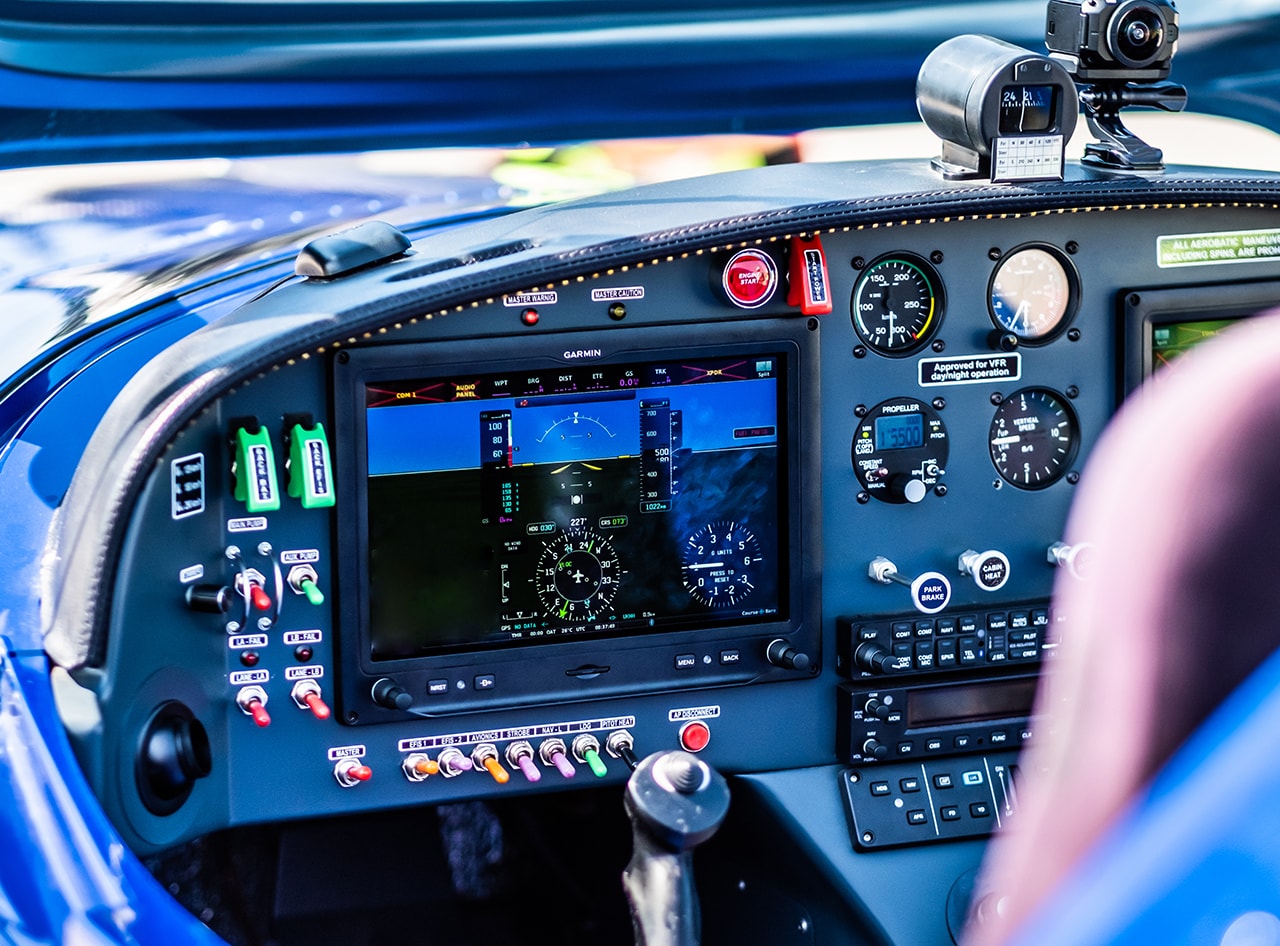
Mastering an altimeter is about more than simply reading numbers. It involves a deeper understanding and practical application of various flight techniques.
Private pilots can benefit significantly from practicing altitude hold. This technique helps maintain a steady altitude, contributing to more stable and controlled flights.
Another useful skill is altitude capture, which ensures accurate and smooth climbing or descending to a target altitude. It's essential for precision and safety during flight maneuvers.
Understanding the influence of wind drift is equally important. This knowledge helps pilots adjust their flight path as needed, enhancing situational awareness and overall flight safety.
Integrating Altimeter Data with Other Instruments
Integrating altimeter data with other instruments is crucial for accurate navigation. The altimeter alone is important but combining its data with the vertical speed indicator (VSI) enhances pilots’ understanding of their climb or descent rates.
Additionally, using the heading indicator along with the altimeter provides a clearer sense of direction, ensuring that pilots stay on their intended flight path. This combined data helps in maintaining accurate course adjustments.
The GPS further enriches the information by offering precise location data. When pilots integrate GPS data with altimeter readings, they can make more informed altitude decisions, enhancing overall situational awareness.
Moreover, integrating radar altimeter data, which measures altitude by sending radio signals downwards and timing their return, with other instruments allows for even more precise altitude measurements.
This is particularly crucial during low-altitude flights where accuracy is paramount for aviation safety.
In essence, the integration of these instruments results in a comprehensive flight picture. Pilots can better navigate and ensure safer flights by using the collective data from the altimeter, VSI, airspeed indicator, heading indicator, GPS, and radar altimeter.
Glass Cockpits and Modern Altimeters
Modern aircraft are increasingly equipped with glass cockpits, which integrate advanced electronic flight instruments, including altimeters. These modern altimeters combine data from GPS and barometric pressure sensors to deliver highly accurate altitude information.
The digital display in glass cockpits offers improved readability and ease of use compared to traditional mechanical altimeters.
Glass cockpits provide pilots with a comprehensive view of critical flight data, including airspeed, heading, and navigation information, all in one place.
This integration enhances situational awareness and reduces the pilot’s workload, contributing to safer and more efficient flight operations. Additionally, modern altimeters in glass cockpits are less susceptible to inaccuracies caused by changes in air pressure, temperature, and humidity, making them a reliable choice for pilots.
By embracing these technological advancements, pilots can benefit from enhanced accuracy and reliability, ensuring safer and more precise navigation.
By following this structured approach, the new sections are seamlessly integrated into the existing article, maintaining consistency in tone and style while enhancing the overall content with additional valuable information.
Embracing Future Altimeter Technology
Technology is making altimeters more accurate. So pilots can rely on more accurate altitudes. Which is good for safe flight levels and obstacle avoidance.
New features, such as real-time weather updates, will allow pilots to receive instant information about weather conditions. This can help them make more informed decisions and improve safety by avoiding hazardous weather.
Another exciting development is the direct integration of altimeters with flight management systems. This seamless integration can streamline navigation, reducing the pilot’s workload and enhancing operational efficiency.
Understanding and staying updated on these emerging technologies is essential for pilots. By preparing for these innovations, pilots can ensure they are ready to make the most of next-generation avionic systems, leading to safer and more efficient flights.
Essential Altimeter Checks During Pre-Flight Inspections
Ensuring the altimeter is functioning properly is a crucial part of pre-flight inspections. Start by verifying that the altimeter setting matches the current barometric pressure. This simple step helps guarantee accuracy during your flight.
Next, pilots should confirm that the altimeter responds correctly to changes in pressure levels. This means the instrument should adjust its readings as expected when pressure changes are simulated.
These checks are vital because they ensure the altimeter provides accurate altitude measurements, which is essential for safety. Accurate altimeter readings help avoid obstacles and maintain proper flight levels, keeping everyone on board safe.
By making these checks a regular part of pre-flight inspections, pilots contribute to smoother and safer flights. Embracing this routine not only upholds aviation standards but also reinforces a commitment to safety and precision in every journey.
Reading the Altimeter
Reading an altimeter involves understanding its various components and how they function together to provide an accurate altitude reading.
A typical pressure altimeter features a dial face with multiple pointers, each representing different units of measurement, such as hundreds, thousands, or tens of thousands of feet. This allows for precise altitude readings at a glance.
The altimeter also includes a barometric scale dial, which records the air pressure in inches of mercury (inHg). This scale is crucial because it allows pilots to adjust the altimeter based on the current atmospheric pressure, ensuring accurate readings.
To read the altimeter correctly, pilots must interpret the different pointers and the barometric scale, considering factors such as air pressure, temperature, and humidity.
By understanding how to read these components, pilots can ensure they maintain the correct altitude, contributing to safer and more efficient flights.
Summary
An altimeter is a critical instrument for measuring altitude, known as altimetry, using atmospheric pressure differences.
It is essential in various activities, prominently in aviation where pilots depend on it for safe flight operations. As altitude increases, air pressure decreases, allowing the altimeter to gauge your elevation accurately.
Pressure altimeters, the most common type, use simple calibrations to display altitude, making them user-friendly.
Key users also include skydivers and hikers who require precise altitude readings for navigation and safety.
Understanding the altimeter diagram, settings, and the non-linear relationship between pressure and altitude allows for precise adjustments and safe, reliable flight.
